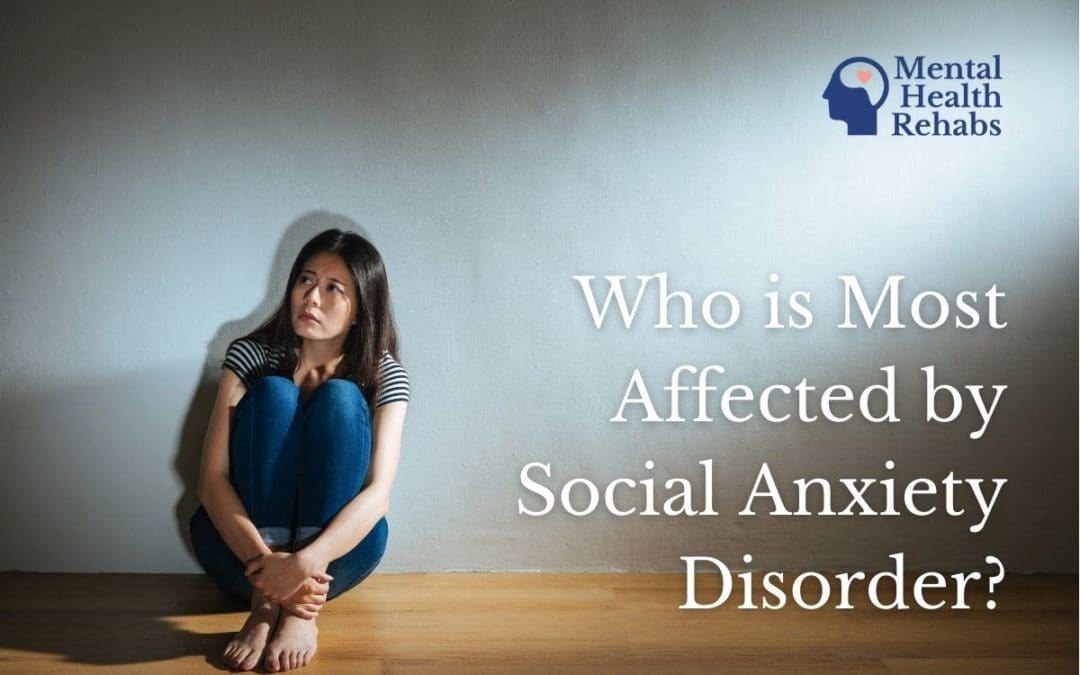Anxiety disorders are the most prevalent forms of mental illness in the United States affecting about 40 million Americans, nearly a fifth of the total population. However, there are multiple types of anxiety disorders, some of which occur under (or because of) very specific circumstances. As such, who is most affected by a social anxiety disorder will not necessarily mirror the same trends as general anxiety.
How Common Is Social Anxiety Disorder? [Statistics]
Social anxiety disorder, also known as SAD or social phobia, is the condition where individuals have an inordinate fear of public embarrassment or judgment. Social situations such as meeting new people or speaking in public can lead to debilitating physical side effects such as racing heartbeat or stomach pains. Aside from the acute symptoms, SAD can have a lasting impact on their overall well-being and negatively affect the quality of life by causing these individuals to withdraw from social situations which can hurt their personal, professional, and romantic relationships.
Despite humans being innately social creatures, social anxiety disorder is one of the most common types of anxiety disorder. According to the ADAA, social anxiety disorder affects 6.8 % of the U.S. population, an estimated 15 million adults. By comparison, the next most common type of anxiety disorder is nearly half that; post-traumatic stress disorder (PTSD) affects 7.7 million Americans, generalized anxiety disorder (GAD) affects 6.8 million, panic disorder affects 6 million, obsessive-compulsive disorder (OCD), affects 2.2 million. While the precise causes of social anxiety disorder are unknown, there are insights as to who is most affected by social anxiety disorder which can be extremely helpful in evaluating one’s individual risk.
Who Is Most Affected By Social Anxiety Disorder?
Studies have found that young adults under the age of 35, women, and individuals with other health conditions are the population groups disproportionately affected by general anxiety (they face a 35% increased likelihood of having some form of anxiety compared to the general public). Women seem to have a greater propensity for mental illnesses in general, being more than twice as likely to be affected with general anxiety disorder, panic disorder, phobias, PTSD. Interestingly, this is not the case for social anxiety disorder, as both women and men face an equal likelihood of having SAD.
Social anxiety disorder typically occurs in children around their early teenage years but can do so as early as eight years of age. It’s estimated that 75% of social anxiety disorders first occur during this period of early adolescence. However, there is no age limit as to when social anxiety disorder can occur.
There are no specific situations that can be pinpointed as a root cause of social anxiety disorder. Trauma such as child abuse can contribute to the development of many types of mental illness including social anxiety but is not exclusive to it. Genetics is one of the most reliable indicators of whether a person may be diagnosed with SAD. Having a first-degree blood relative with social anxiety disorder increases the likelihood up to six times.
What To Do If You Have Social Anxiety Disorder
If you or someone you know has a social anxiety disorder, good news, it’s treatable. Cognitive-behavioral therapy (CBT) is a form of psychotherapy that can help individuals manage both the physical and psychological symptoms of their social anxiety. CBT empowers individuals to recognize their triggers and create practical coping mechanisms that are tailored to their unique needs. While social anxiety disorder may never be completely “cured”, this form of therapy makes it possible for a socially anxious person to work through their discomfort enough to fully participate in their life once more.
Exposure therapy is another type of counseling that can help a person to overcome their social fears. Coupled with the teachings of CBT, exposure therapy makes for a powerful treatment option that encourages progress at one’s own pace.
There are also medications that can be used to mitigate the acute effects of social anxiety disorder. Beta-blockers can mitigate the physical symptoms (racing heart, sweating, tremors, etc.), benzodiazepines can calm the muscles and mind and counteract feelings of panic, and antidepressants can improve long-term improvement in mood stabilization but take several months to take effect.
Whether one type of treatment—or a combination of them—is right for you, will largely depend on the severity of your social anxiety disorder. The best place to start is by seeing a licensed mental health professional for an evaluation. There are a number of programs available in-person and online, find one near you today.

